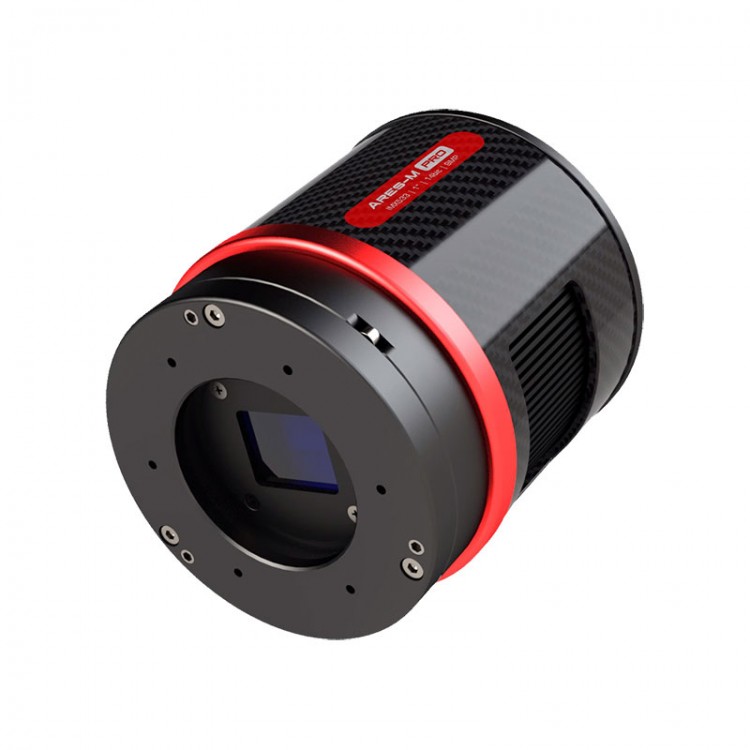
| Quantity | 3+ units | 10+ units | 30+ units | 50+ units | More |
|---|---|---|---|---|---|
| Price /Unit | $939.06 | $919.89 | $891.14 | $852.82 | Contact US |
 China-Made HEA18C AZ/EQ Dual SWG Telescope Equatorial Mount with 8.5KG Payload Capacity for iOptron
$1,330.53
China-Made HEA18C AZ/EQ Dual SWG Telescope Equatorial Mount with 8.5KG Payload Capacity for iOptron
$1,330.53
 ASKAR 18mm Focal Plane Adjuster High Quality Accessory for Astronomical Telescope Focuser or Camera Sensor
$143.81
ASKAR 18mm Focal Plane Adjuster High Quality Accessory for Astronomical Telescope Focuser or Camera Sensor
$143.81
 VRNV100 3D VR Head-mounted Night Vision Telescope 8K 96MP HD 8X Digital Zooming Binocular
$190.54
VRNV100 3D VR Head-mounted Night Vision Telescope 8K 96MP HD 8X Digital Zooming Binocular
$190.54
Player One Artemis-C PRO (IMX294) 11.7MP Color Camera Cooled Camera Designed with TEC Cooling Module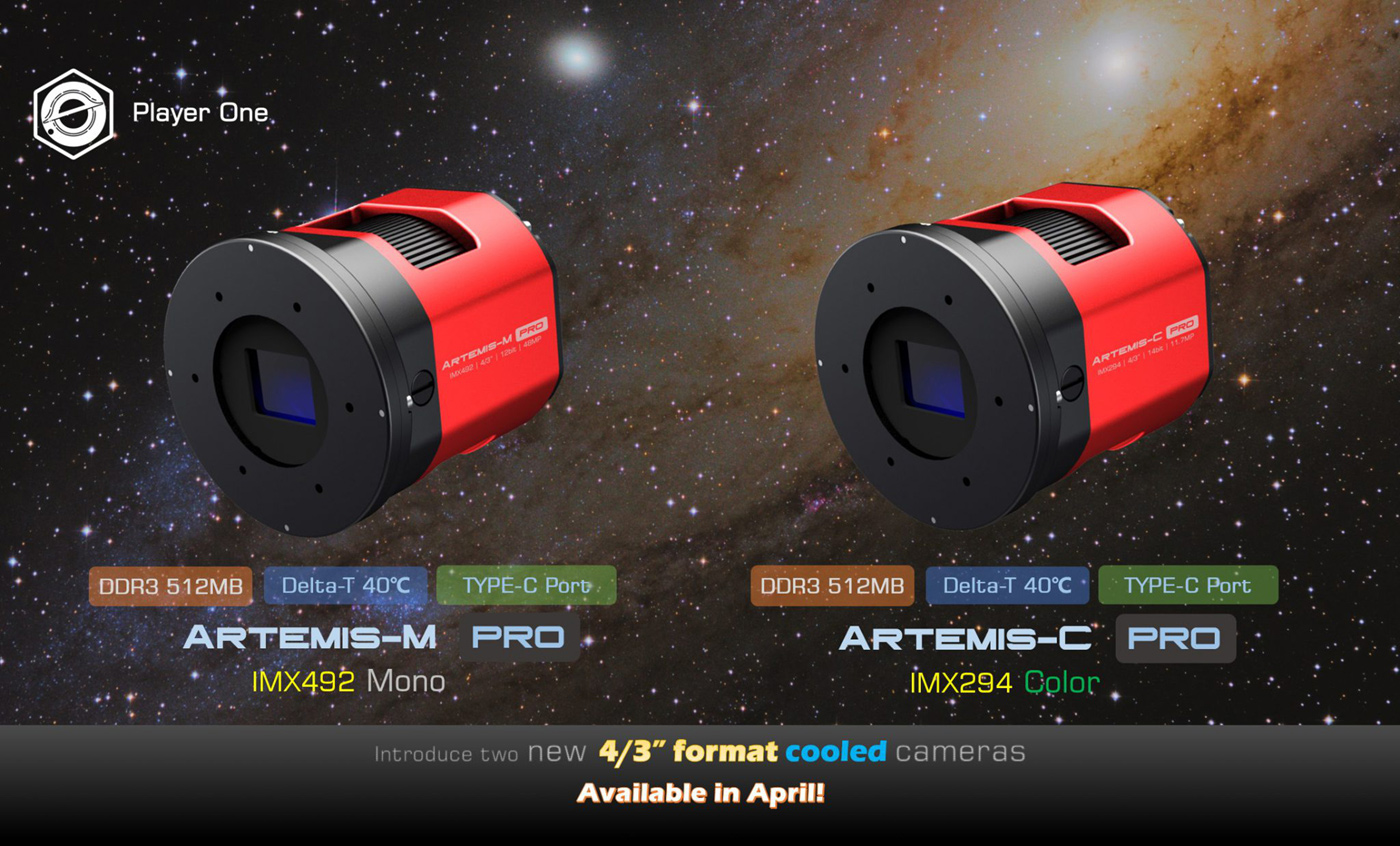
The DSO camera series is the most advanced product line in the history of Player One. We started working on the project in 2021, and after many revisions and rebuilds, we came up with this final version. It projects our new technology and design, and we are proud to introduce enthusiasts to the many features of the cooled camera series.
Power supply is not include in the camera package. High quality 12V 5A power supply can be bought separately.
Download drivers and software: http://player-one-astronomy.com/service/software/
Download manuals: http://player-one-astronomy.com/service/manuals/
Product Description:
New Cutting-edge Design
We wanted the DSO cooled camera to be not only of high quality, but also functional and beautiful. After many attempts, we decided on the final style, using a very scientific and technological octagon to build the main line, 4 sides are curved, supplemented by circular chamfers. The front panel is designed to be rounded to avoid diffractive starlight when mounted on the RASA main focus. It is red and black. The ultra-fine matte finish on the whole surface makes the camera look luxurious and cool, showing the style of Player One.
Artemis-C Pro (IMX294) cooled camera is designed for advanced DSO imaging. It adopts IMX294 4/3" format color sensor for Sony. The 4.63um pixel size accommodates a well depth of 65.8Ke with a total of 11.7MP (the resolution is 4144*2824), and the diagonal is 23.2mm.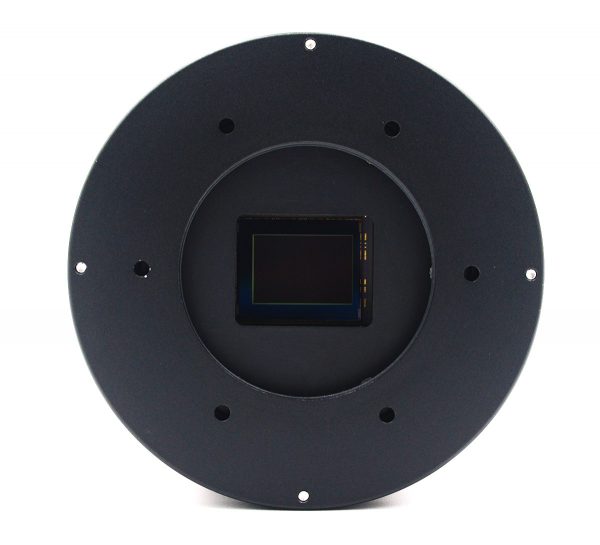
Rear Adjustment 4 Point Sensor Tilt Plate
When you are taking pictures of deep sky objects, using a sensor tilt plate can get a much smaller field curvature of the telescope. We adopts rear adjustment and 4 point tilt plate and there is a lot advantages in usage.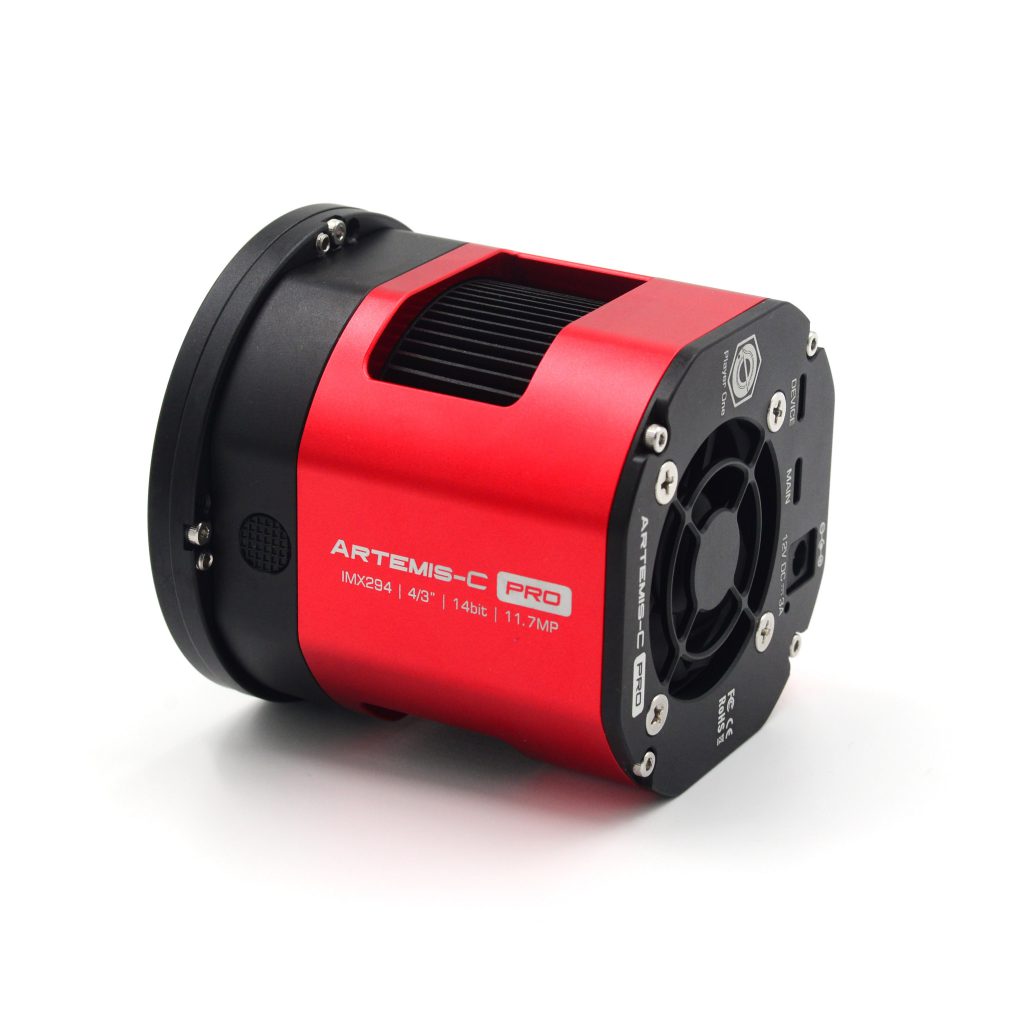
4 point adjustment makes it easier to know which corner needs to be adjusted. The built-in high-density sponge shading pad can block the light from the side slits without any side leakage.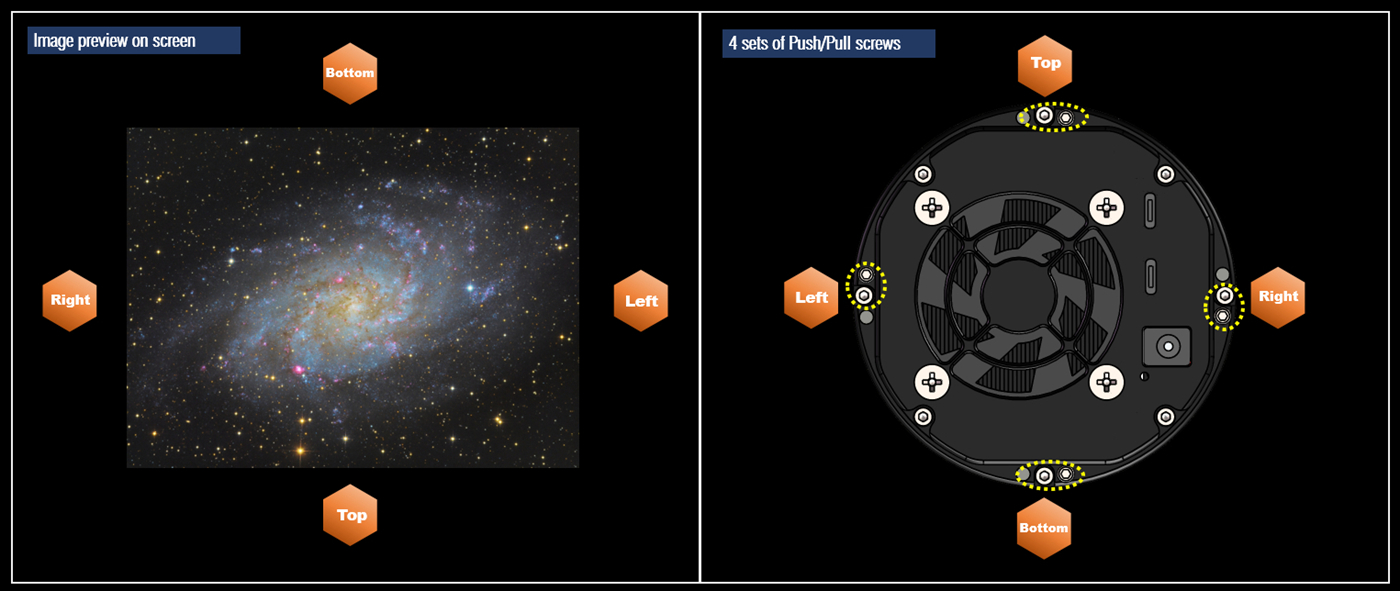
To understand 4 point adjustment method, there is an example for users:
Deep Cooling
The cooled camera uses 2 Stage TEC cooling unit. After improving the structure design to reject the heat back to camera chamber, camera Delta-T can reach over 40℃.

512MB DDR3 Cache
As an improvement, DDR3 cache in the cooled camera are increased to 512MB. It helps stabilize and secure data transmission, effectively avoids frame dropping and greatly reduces readout noise.
With the DDR3 cache, the camera does not have high demands on computing any longer. But it still has an excellent performance even if it is connected to a USB 2.0 port.
Technology for STARVIS
Artemis-C Pro (IMX294) cooled camera is based on the technology for Sony STARVIS. It is a back-illuminated pixel technology used in CMOS image sensors.
4/3" Format
Artemis-C Pro cooled camera has 4/3" format (19.2mm*13mm). The size is very popular for DSO imaging.
14bit ADC
IMX294 sensor has a 14-bit on-chip ADC. 14bit (16384 levels) provides higher sample resolution than 12bit (4096 levels) does.
Type-C Data Port and Power Port
Rear panel of the cooled camera has two Type-C data ports and one 12V DC 5.5x2.1mm power port.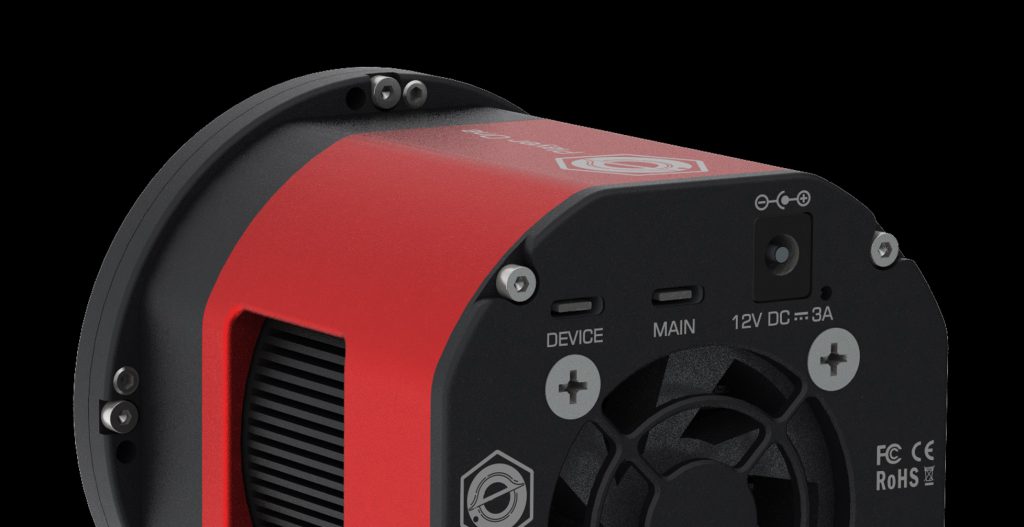
The main data port supports the USB 3.0 protocol, and the camera can run 33fps in RAW8 mode. When you are assembling devices at night, the Type-C port supports double-sided plugging, so it is easier to connect.
When you are recording a video, the actual writing speed will be affected by the writing speed of the hard disk itself. When the hard disk has a slow writing speed, the recording may not reach the theoretical speed. It is recommended that you use a good SSD to record data to get the most out of your camera.
The camera has a 12V DC5.5*2.1mm interface, providing enough power for the TEC cooling system. If you don't need to turn on cooling, you only need to connect the main Type-C port to use the camera as an uncooled camera.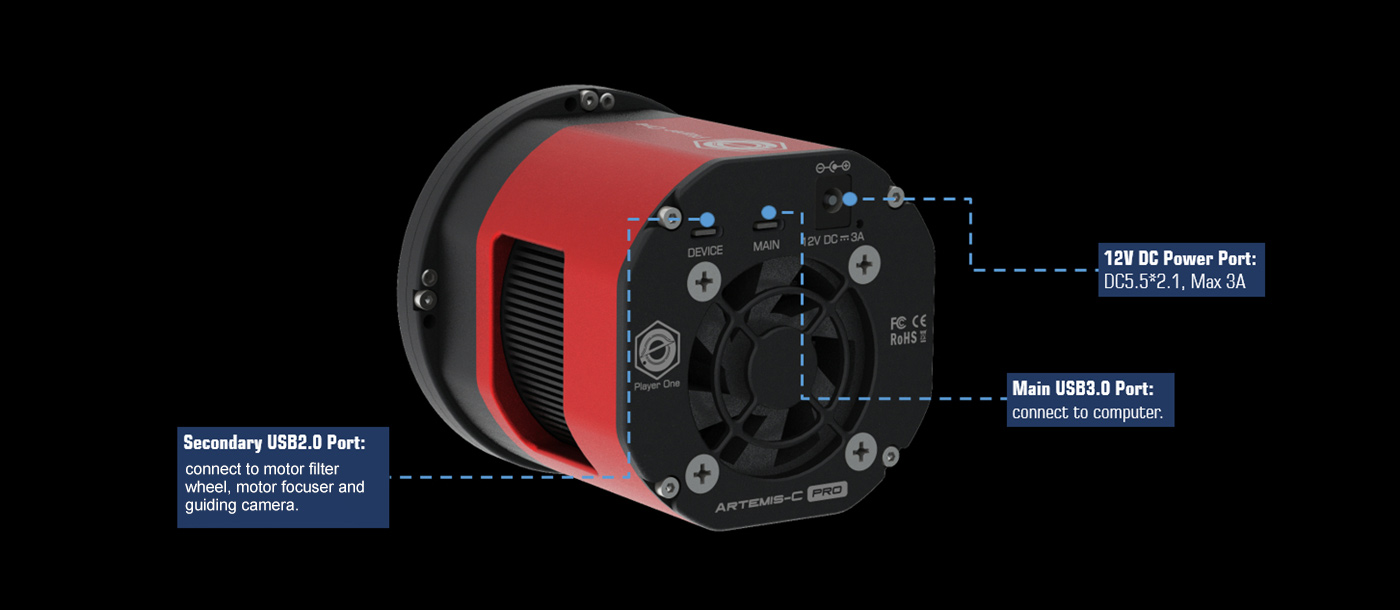
Standard Cable Use: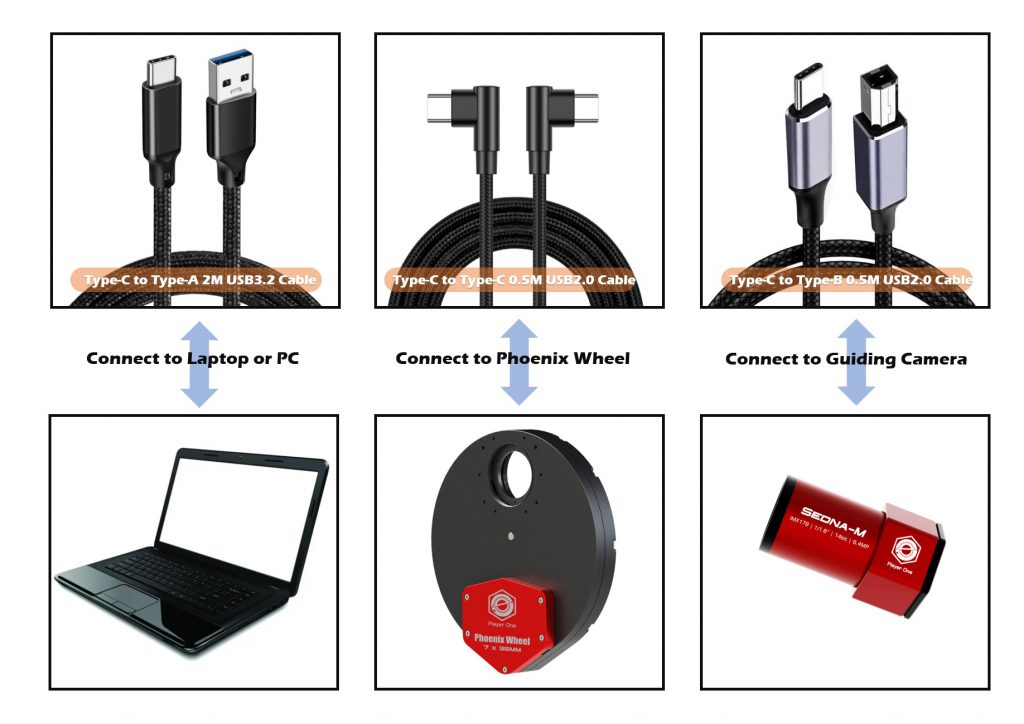
Cooling System and Anti-Dew Heater
In ASCOM window, we provide 3 adjustable parameters: Target temperature, fan speed and anti-dew power.
Standard Delta-T: 40℃ (±2℃) , with ambient temp 30℃, fan speed 100%, and dew heater 10%.
Recommend Delta-T settings: 35℃ below ambient temperature, fan speed 70%, dew heater 10%, and power consumption 40-60%.
The rotation speed of cooling fan is also adjustable. The default value is 70% speed.
Dew problem is the biggest enemy in astro imaging. Anti-dew heater is integrated on the front of the camera and the heating power is adjustable.
Over-voltage and Over-current Protection Mechanisms
The camera ensures the safety of your camera and other equipment through over-voltage and over-current protection mechanisms.
Performance:
At gain=0, the camera has 13 stops dynamic range and 65.8Ke full well capacity, and readout noise is 7.8e.
HCG open at gain=120, the camera has 12.97 stops dynamic range and 14.5Ke full well, and readout noise drops to only 1.8e.
Frame Rate
Artemis-C Pro cooled camera can run 33FPS under RAW8 mode. It's faster than existing models on the market.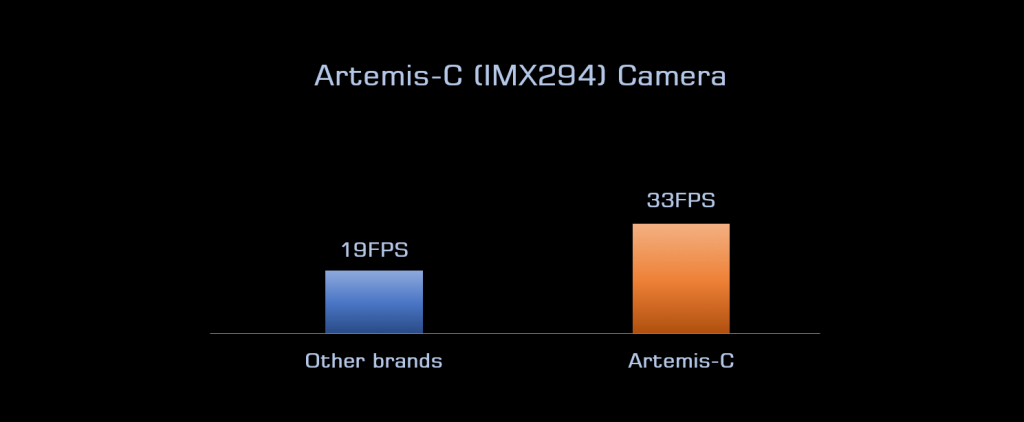
Readout Noise
Regarding readout noise, we solemnly promise that all values are obtained from actual tests. You can use the software for Sharpcap 4 to test. SC4 has a function called Sensor Analysis, providing a very simple way to test readout noise.
We wrote a tutorial on website: https://player-one-astronomy.com/service/manuals/
If you are interested in readout noise testing, you can try it by yourselves because it is very simple.
Dark Frame
We provide original dark frame of Artemis-C PRO camera for check:
Dark frame 1: Gain=120, offset=50, exposure=300s, Temp=-10℃: Download Dark frame https://player-one-astronomy.com/download/Dark%20Frames/Artemis-C%20PRO%20300S%20GAIN120%20OFFSET50%20-10DEG.fits.zip
Dark frame 2: Gain=0, offset=5, exposure=300s, Temp=-20℃: Download Dark frame https://player-one-astronomy.com/download/Dark%20Frames/Artemis-C%20PRO%20300S%20GAIN0%20OFFSET5%20-20DEG.tiff.zip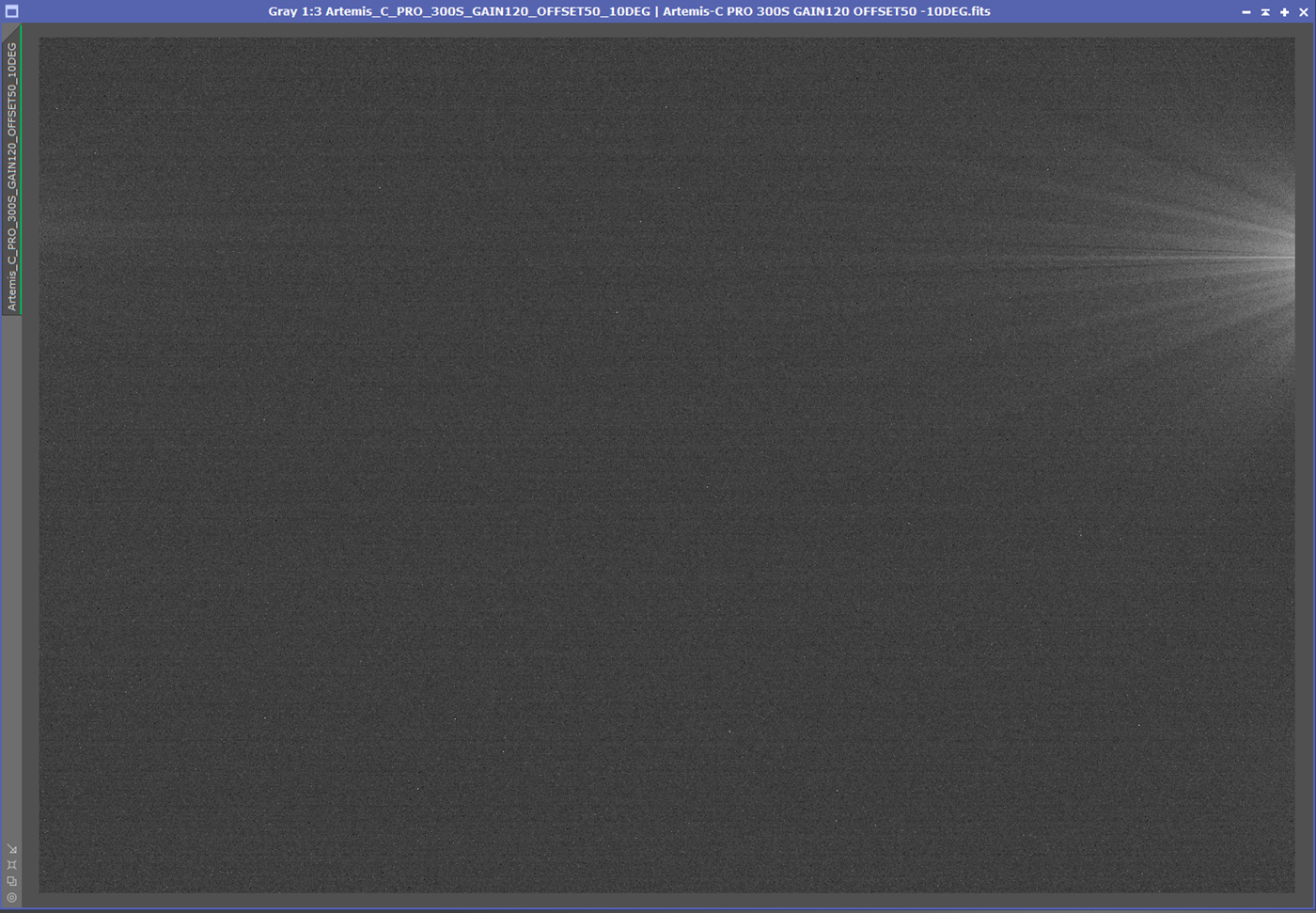
Preview of Dark frame 1: Exposure=300s, gain=120, offset=50, temp=-10℃ STF auto-Stretch in Pixinsight 1.86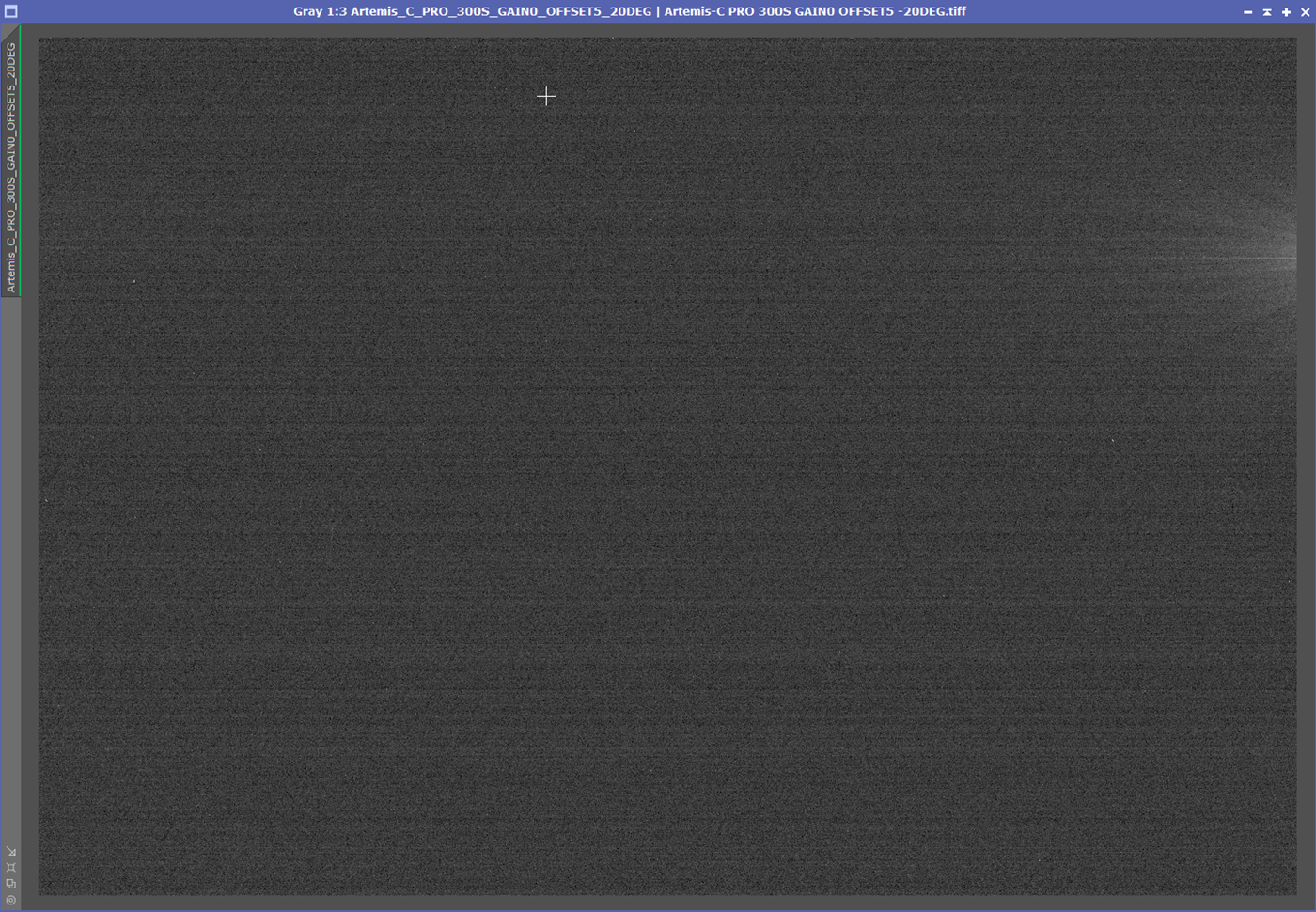
Preview of Dark frame 2: Exposure=300s, gain=0, offset=5, temp=-20℃ STF auto-Stretch in Pixinsight 1.86
Dark Current
The dark current is only 0.0015 e/s/pix at -20℃, and 0.0086e/s/pix at 0℃. In entire curve, dark current is almost like a straight line, which can prove that Artemis camera is of good quality.
QE Curve
This is the Relative QE curve from the company for Sony. We estimate the QE peak of IMX294 is about 75%.
Mechanical Drawing: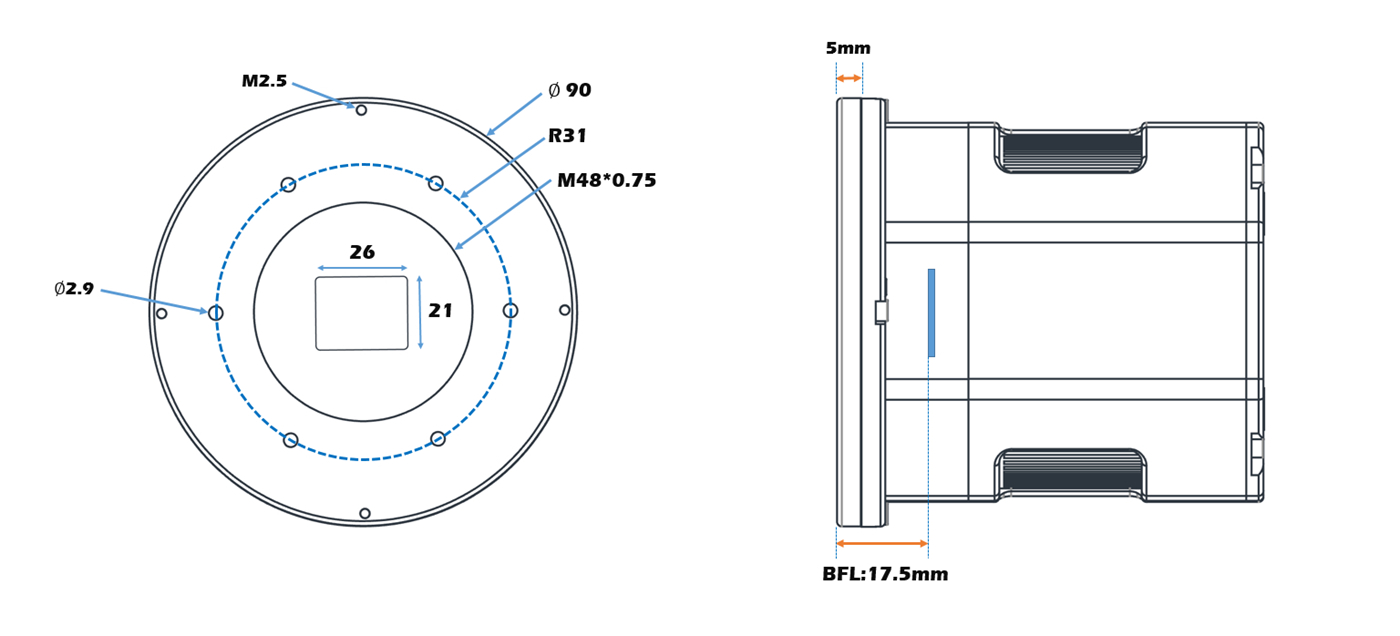
BFL Solutions:

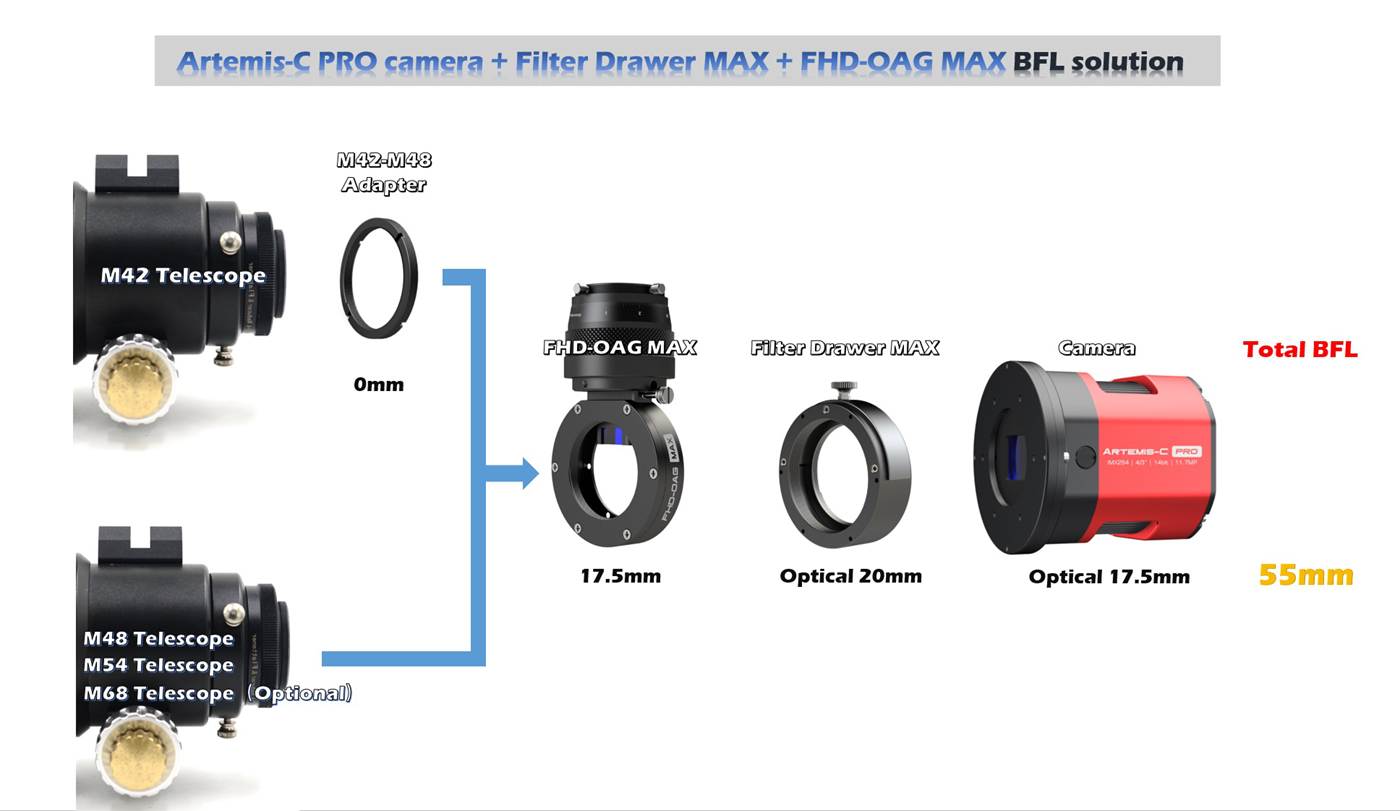
Packing List: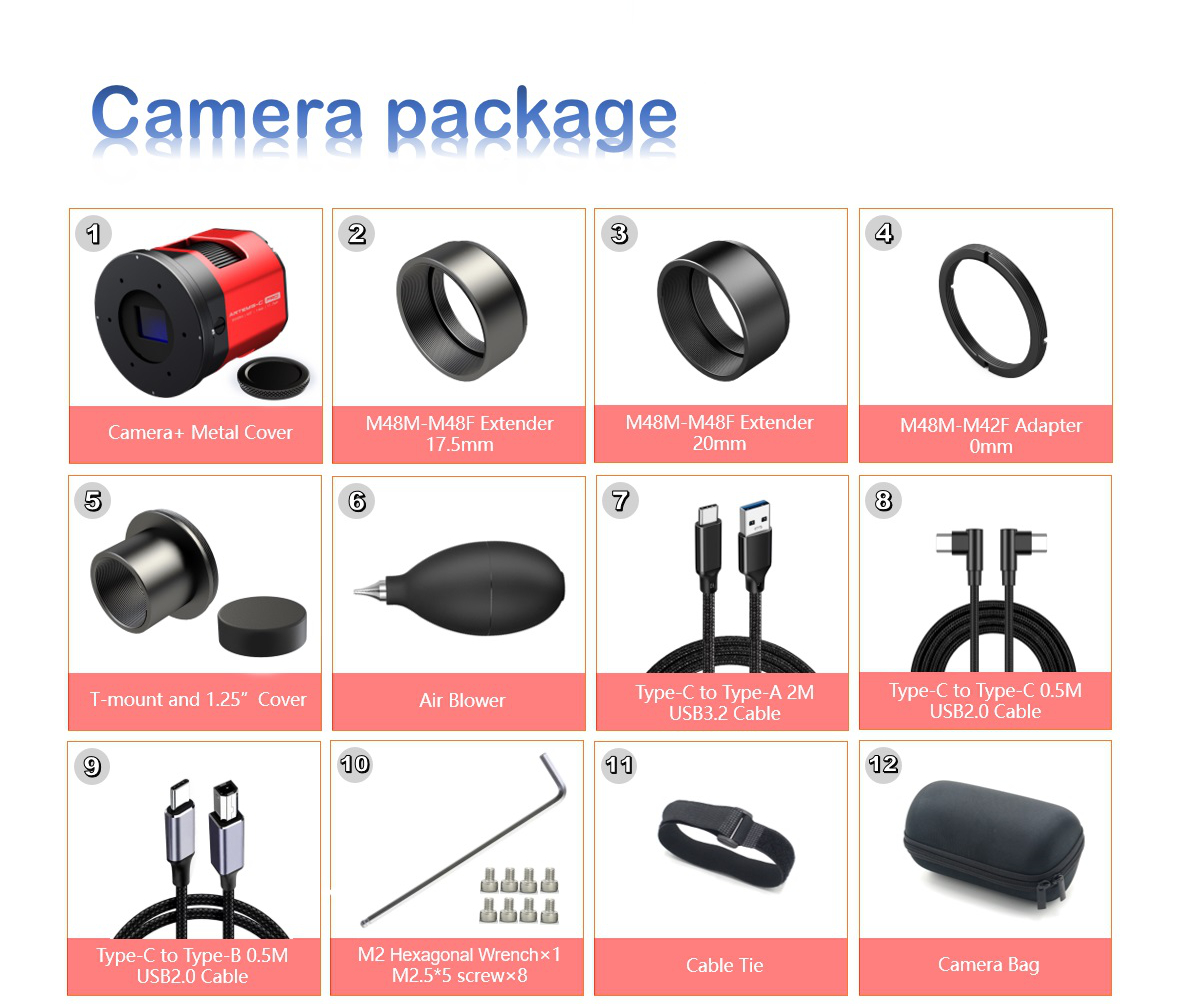
Users Work: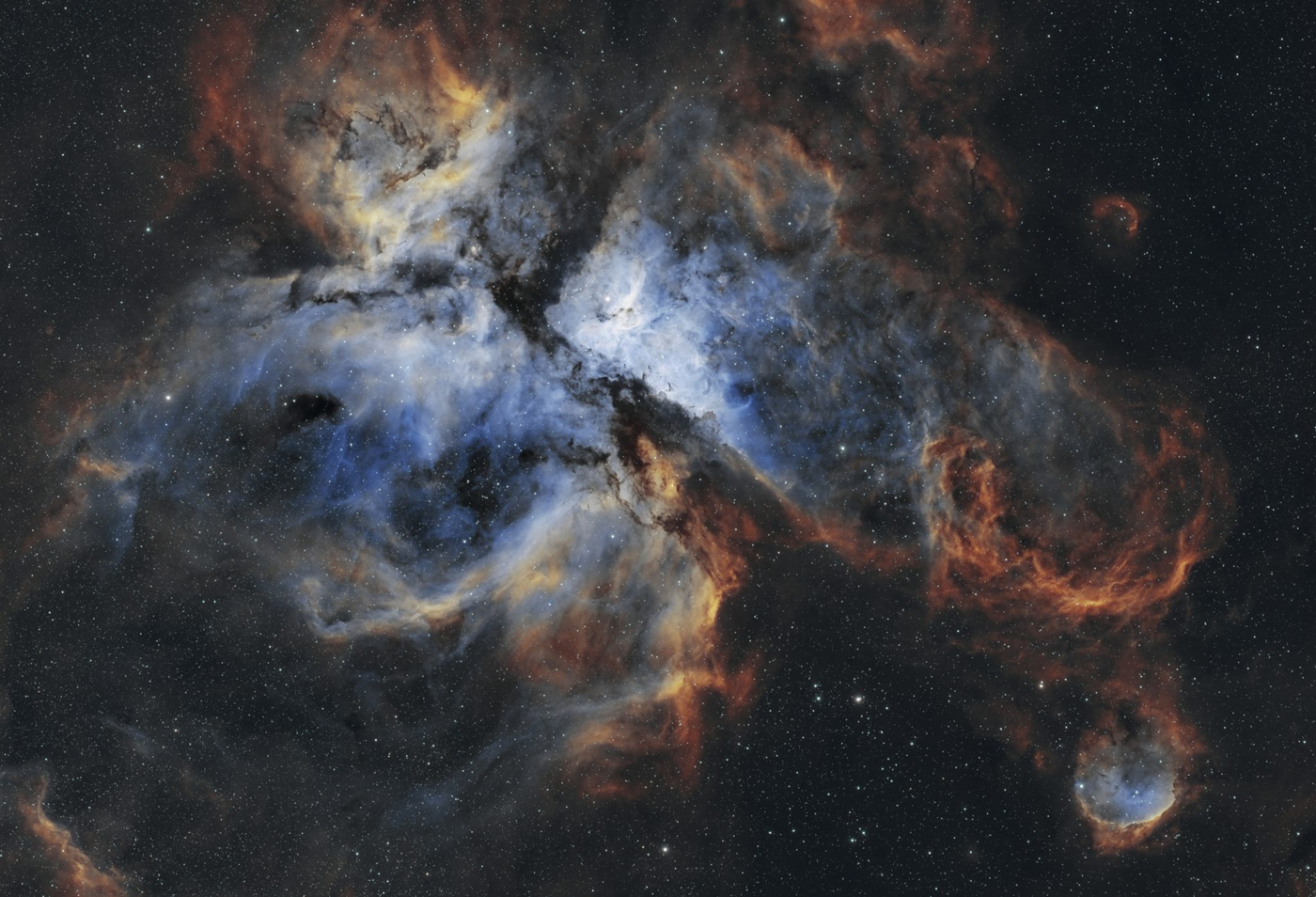
Carina Nebula, Alex Nicholas, Askar 65PHQ + Artemis-C Pro + Dual-band 6nm filter
NGC7822, Luke Newbould, RASA8 + Dual-band filter + Artemis-C Pro
Lobster claw nebula and Bubble nebula, Luke Newbould, RASA8 + Dual-band filter + Artemis-C Pro
Packaging Details:
- G.W.: 1.5kg